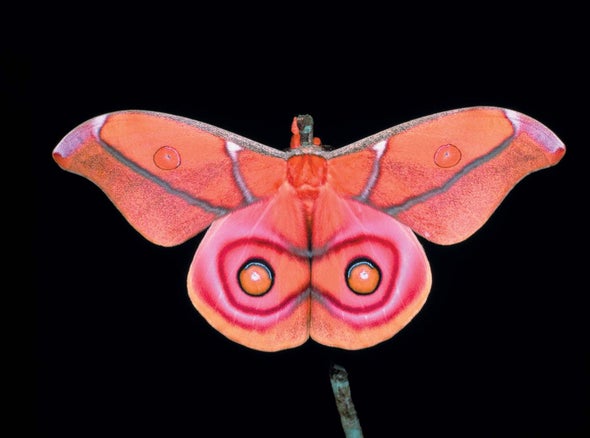Butterfly markings work better when they’re “looking” toward prey

First, Rowland and her co-author trained chicks to attack a mealworm hidden behind a paper printout of two eyespots at the end of a runway. When the eyespots’ pupils were specifically pointed in the chicks’ direction, the birds repeatedly ran toward the paper and then backed away, and they waited a few minutes before attacking—signs of wariness. But when the pupils instead appeared to look away from the direction of the chicks’ approach, the birds attacked in seconds. Centrally located pupils, though not as effective as ones that peered directly toward the chicks, resulted in longer delays than pupils that looked the other way.
“This suggests that they really are paying attention to the direction of the pupils in the eyespots and are perceiving them as eyelike stimuli,” Rowland says. The concentric eyespots found most often in the insect world, she adds, may seem to the chicks like a pair of eyes that follow them, irrespective of approach angle.
National University of Singapore evolutionary biologist Antonia Monteiro, who was not involved in the research, says the study is a “cool” demonstration of an evolutionary theory for eyespots.
“These butterflies can be encountered from all angles, so having the pupil centrally located ends up being pretty good,” Monteiro says. Still, she says, the eyespots used in the study were several millimeters larger than even the largest commonly found in nature, raising the possibility that the chicks may have been extra frightened by the size of the paper eyes.
This article was originally published with the title “Science in Images” in Scientific American 328, 1, 18-19 (January 2023)
doi:10.1038/scientificamerican0123-18
ABOUT THE AUTHOR(S)

Maddie Bender is a science writer and podcaster based in Boston, Mass. Follow her on Twitter @MaddieOBender Credit: Nick Higgins.

